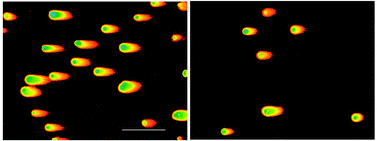DNA damage induced by ultraviolet radiation is the key initiator for skin carcinogenesis since mutations may arise from the photoproducts and it also contributes to photoimmune suppression. The active vitamin D hormone, 1α,25 dihydroxyvitamin D3 (1,25(OH)2D3) reduces thymine dimers, the major photoproduct found in human skin after UV exposure, and suppresses the accumulation of nitric oxide derivatives that lead to more toxic reactive nitrogen species (RNS). We examined whether other forms of DNA damage are reduced by 1,25(OH)2D3, and hypothesized that photoprotection by 1,25(OH)2D3 is, in part, due to the suppression of various forms of promutagenic DNA damage, including thymine dimers, through a reduction of genotoxic RNS. Different forms of UV-induced DNA damage were investigated in irradiated skin cells treated with or without 1,25(OH)2D3, or inhibitors of metabolism and inducible nitric oxide synthase. Keratinocytes were also treated with nitric oxide donors in the absence of UV light. DNA damage was assessed by comet assay incorporating site specific DNA repair endonucleases, and by immunohistochemistry using antibodies to thymine dimers or 8-oxo-7,8-dihydro-2′-deoxyguanosine, and quantified by image analysis. Strand breaks in T4 endonuclease V, endonuclease IV and human 8-oxoguanine DNA glycosylase digests increased more than 2-fold in UV irradiated human keratinocytes, and were reduced by 1,25(OH)2D3 treatment after UV exposure, and also by low temperature, sodium azide and an inhibitor of inducible nitric oxide synthase. Conversely, nitric oxide donors induced all three types of DNA damage in the absence of UV. We present data to show that 1,25(OH)2D3 protects skin cells from at least three forms of UV-induced DNA damage, and provide further evidence to support the proposal that a reduction in RNS by 1,25(OH)2D3 is a likely mechanism for its photoprotective effect against oxidative and nitrative DNA damage, as well as cyclobutane pyrimidine dimers.
